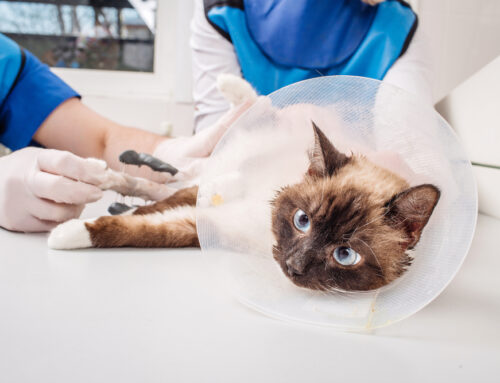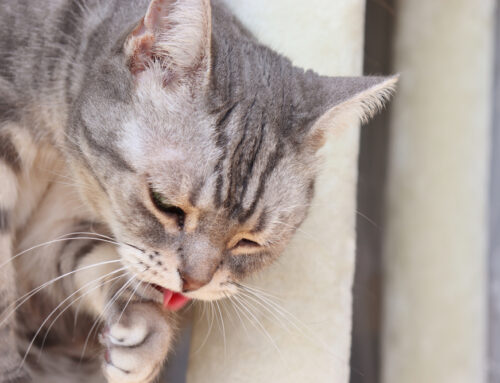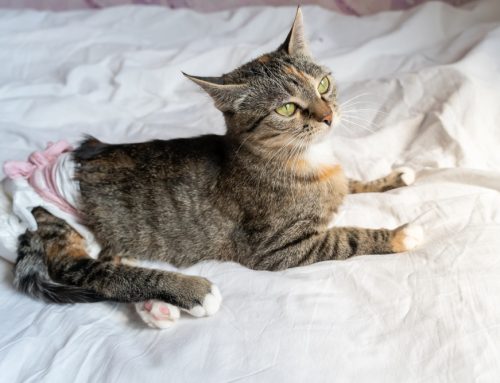As a devoted cat owner and lover, you prioritize your feline friend’s well-being above all—or almost all—else. Part of this pursuit includes acknowledging and safeguarding against invisible but ever-present threats, specifically viral diseases. Viral feline diseases are numerous and varied, so our Greenfield Veterinary Clinic team explains their signs, transmission, prevention, and care to help ensure you’re prepared to support your cat’s health.
The feared five: Common feline viral diseases
Viral diseases are rapidly transmitted from cat to cat through close or direct contact with infected bodily fluids. The most common feline viral diseases include:
- #1: Feline herpesvirus (FHV-1) — Feline herpesvirus is transmitted via respiratory droplets and primarily targets the respiratory system. Symptoms include sneezing, nasal discharge, and conjunctivitis. Despite treatment, stress can trigger future flare-ups, necessitating a calm environment for affected cats.
- #2: Feline calicivirus (FCV) — Similar to herpesvirus, calicivirus affects the respiratory system and can cause oral ulcers and lameness. Calicivirus is commonly transmitted in areas where cats are kept in close quarters, such as a shelter or cattery. In addition to vaccination, maintaining good hygiene and minimizing stress can help prevent disease transmission.
- #3: Feline infectious peritonitis (FIP) — FIP is caused by a feline coronavirus mutation. FIP can manifest in wet or dry forms and affects multiple organ systems. Sadly, FIP is often fatal, making early detection and supportive care critical to an infected cat’s comfort and quality of life.
- #4: Feline panleukopenia virus (FPV) — Also known as feline distemper, FPV is a highly contagious viral disease affecting a cat’s gastrointestinal (GI) tract and immune system. Vaccination is critical for FPV prevention, especially for kittens who are most vulnerable to the disease and often do not survive if they contract this virus.
- #5: Feline leukemia virus (FeLV) and feline immunodeficiency virus (FIV) — FeLV and FIV attack a cat’s immune system, leaving an affected feline susceptible to various secondary infections. Regular veterinary exams and FeLV/FIV testing are crucial for early detection and management. Cats with FeLV may experience rapid illness or latent disease. In the latter, affected cats may not appear sick until they reach their later years.
Recognizing illness: Viral disease signs in cats
Cats are masters at hiding discomfort. Consult our veterinary team if your cat’s normal routine or behavior changes. Understanding how cats express pain and illness can ensure you identify early viral disease signs, which may include:
- Lethargy
- Appetite loss or change
- Weight loss
- Vomiting or diarrhea
- Coughing or unusual breathing
- Increased or decreased grooming
- Lameness or mobility changes
- House soiling
- Behavior or personality changes
Protecting your cat: Feline viral disease prevention
Vaccination is the feline viral disease prevention cornerstone. Following our Greenfield Veterinary Clinic team’s recommended vaccination schedule, including completing the kitten vaccine series and regular booster vaccines throughout your cat’s adult life, is essential for comprehensive and reliable disease protection. Additionally, maintaining good hygiene, minimizing stress, and keeping your cat indoors can significantly reduce their risk for contracting a virus. Finally, routine wellness care, including annual or biannual exams, vaccines, parasite prevention, and blood work, supports their overall health and provides the best opportunity for early detection, should your cat become infected. If your cat is overdue for their routine vaccinations or has never been vaccinated against feline viral diseases, contact our team to schedule a preventive care appointment.
How to care for a cat with a feline viral disease

If your cat is diagnosed with a viral disease, ensure you provide them with veterinarian-recommended care and support. Our team will advise you on your cat’s treatment and what to expect from their recovery or virus progression. In addition to adhering to these recommendations, you’ll need to create and maintain a stress-free environment, ensure your cat receives proper nutrition, and stay alert for changes in your cat’s health or behavior, as these could indicate disease progression and the need for additional veterinary intervention. In many cases, diligent and attentive care can ensure your cat enjoys a relatively normal life.
By developing a comprehensive understanding of feline viral diseases, you can take an active role in your cat’s health and wellness. Staying attuned to your cat’s health, maintaining regular veterinary care, and ensuring complete vaccination can ensure your cat’s safety and well-being, minimizing their feline viral disease risks. Have we seen your cat recently? If not, they need important wellness services. Schedule your cat’s appointment with our Greenfield Veterinary Clinic team.







Leave A Comment